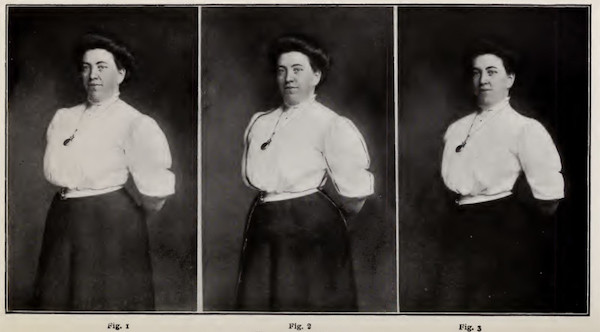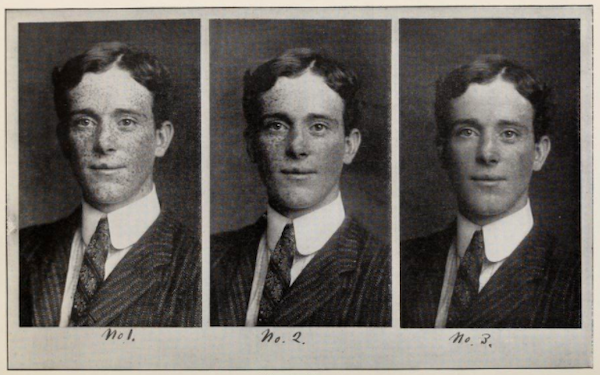Don't miss the latest stories
What ‘Instagram VS Reality’ Was Like In The 1900s, Way Before Photoshop Came In
By Ell Ko, 30 Sep 2021
Subscribe to newsletter
Like us on Facebook

Page from J. B. Schriever’s ‘Complete self-instructing library of practical photography’ (1908). Image by Harold B. Lee Library via Internet Archive (public domain)
The generations of today are not the only ones falling victim to the unattainable “Instagram beauty standard.”
It turns out that the people of Victorian times were way ahead of the game, creating their own version of Photoshop with simply some very clever pencil and photography techniques.
As spotted by user 20toesdown on Reddit, the book Complete self-instructing library of practical photography, published in 1908, walks its readers through various techniques to touch up portraits the subject or photographer didn’t deem satisfactory.
Some old-school examples include straightening crossed eyes, like the image above. Others show how to conceal freckles, make closed eyes appear open, and “reducing size of stout subjects.”

Page from J. B. Schriever’s ‘Complete self-instructing library of practical photography’ (1908). Image by Harold B. Lee Library via Internet Archive (public domain)
A page near the beginning details how a “retouching desk” should be set up and a list of the required equipment: magnifying glass; lead holder; lead; and etching knife; among others.
“By the combination of etching and retouching—i.e., by the use of the knife and pencil—you etch and model, and with these two instruments you can make any alteration you desire on the negative,” the book writes.
In its introduction, the book offers a look into how photography at the time was already creating a demand for retouching services: the early days saw a “wet-plate process” being used, where prints of the photos were made straight from the negative without “any alteration whatsoever.”
This could be done because the wet-plate created a softer look than the dry variation. This resulted in “imperfections” being “less visible”—akin to the beauty modes of today—and the subjects were overall satisfied “with an exact likeness of themselves.”
But the dry-plate entered the scene, and the “detects in the human face” began to appear “more apparent on the negative.” People began to clamor for a “greater softening,” so photographers started removing the “imperfections” laboriously by hand from every individual print.
Eventually, of course, they got fed up with the “irksome” process, leading them to “devise some means whereby [one] could apply these remedies direct to his negative.” This would mean that every print made from it would be satisfactory to the customer.
Hence the process of applying lead to negatives and “softening” the imperfections before printing them—perhaps the equivalent to the airbrush tool on Photoshop today.
The book is still being published today. However, it’s now residing in the public domain, and can be read or downloaded for free here. Or, take a look at a couple of examples below.

Page from J. B. Schriever’s ‘Complete self-instructing library of practical photography’ (1908). Image by Harold B. Lee Library via Internet Archive (public domain)

Page from J. B. Schriever’s ‘Complete self-instructing library of practical photography’ (1908). Image by Harold B. Lee Library via Internet Archive (public domain)
[via PetaPixel, pages from J. B. Schriever’s ‘Complete self-instructing library of practical photography’ (1908). Image by Harold B. Lee Library via Internet Archive (public domain)]
Receive interesting stories like this one in your inbox
Also check out these recent news





